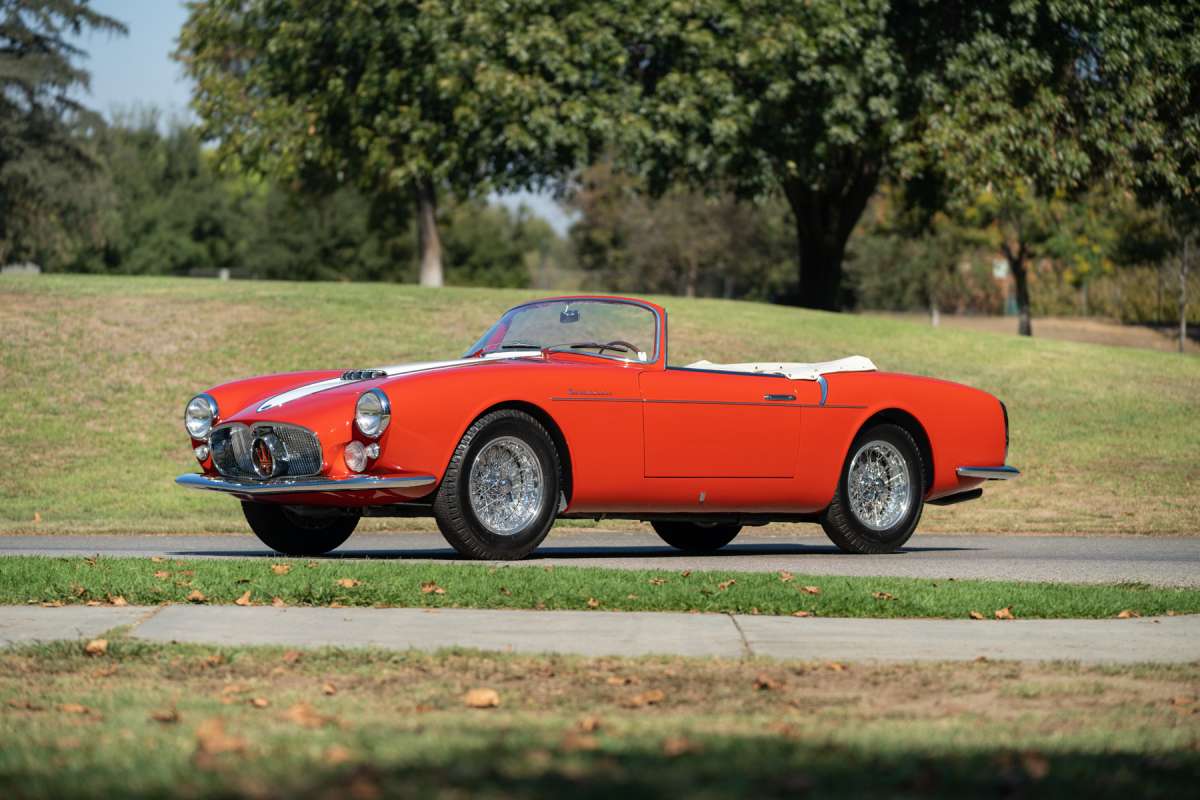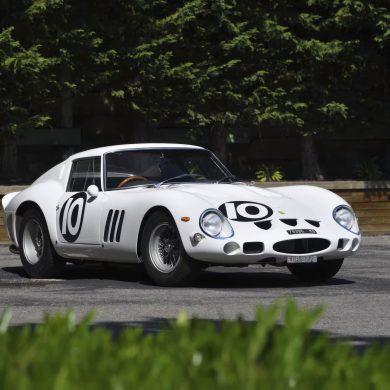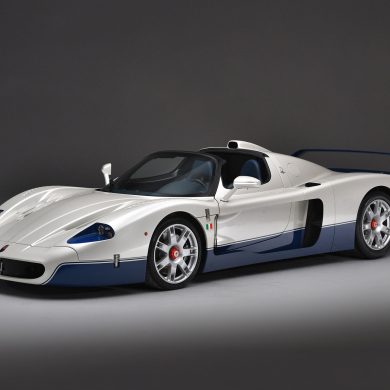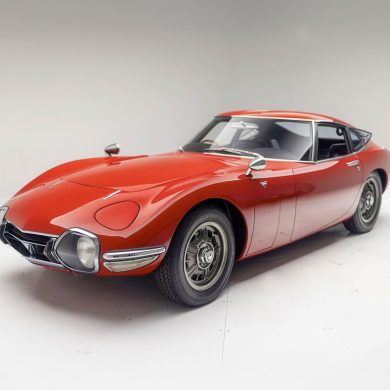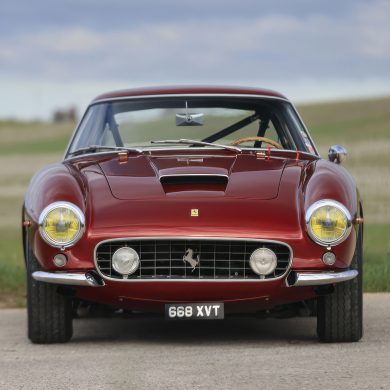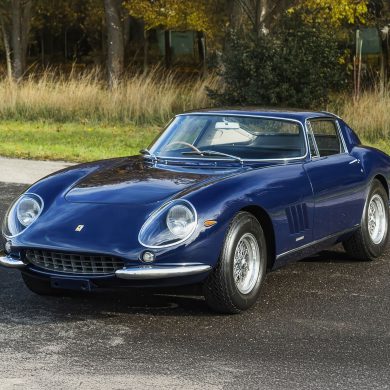The October 2020 Geared Online auction hosted by Gooding & Company has achieved a sale total of $9,284,031. After selling 51 of the 66 lots offered, an overall 77% sales rate was achieved, with three cars attracting a sale price of more than $1 million.
There was a diverse lineup of collector cars being offered by Gooding & Company. These ranged from early classics, modern supercars, and even a carefully curated selection of automobilia during the five-day online sale.
The highest sale price achieved was Lot 49, the 1956 Maserati A6G/54 Spider that sold for $1,892,000. Coming in second was Lot 41, a 1964 Ferrari 250 GT Lusso that was sold for $1,430,000, and third was Lot 26, the immaculate 1957 Mercedes-Benz 300 SL Gullwing that saw a fierce bidding battle to be finally sold for $1,254,000.
Gooding & Company’s offering of automobilia had an impressive 100% sell-through rate.
“Our?Geared Online?sales have proven to be incredibly successful thanks to our team of specialists and their expertise in consigning unrestored gems and top of the category collectibles. These sales have offered a distinguished array of cars and automobilia that are trending among collectors and blue-chip marques, encouraging continued confidence among our buyers in the quality consignments.”
Gooding & Company President and Founder, David Gooding.
The Top Five Sales of the October 2020 Geared Online Auction were as follows:
- 1956 Maserati A6G/54 Spider, $1,892,000
- 1964 Ferrari 250 GT Lusso, $1,430,000
- 1957 Mercedes-Benz 300 SL Gullwing, $1,254,000
- 1956 Mercedes-Benz 300 Sc Cabriolet, $748,000
- 1975 Lancia Stratos HF Stradale, $451,000
Three cars to be highlighted in this auction include a 1964 Ferrari 250 GT Lusso, 1975 Lancia Stratos HF Stradale, and a 1972 Ferrari Dino 246 GT.
Lot 41 – 1964 Ferrari 250 GT Lusso
Estimate: $1,400,000 – $1,800,000. Sale Price: $1,430,000
The 250 GT Lusso is the embodiment of the best that the Pininfarina design and Ferrari performance had to offer.

Being the last production of the 250 GT model, the Lusso has benefited from the decade of chassis development along with the sturdy but compliant suspension, four-wheel Dunlop disc brakes, and Ferrari’s 3.0-liter V-12.
Despite the Lusso was designed for road use, owners with more adventurous souls have proven its motorsport heritage with its successes at the Tour de France, the Targa Florio, and the Spa sports car races.
The exquisite coachwork of the Lusso from Battista “Pinin” Farina’s design and constructed by Carrozzeria Scaglietti has always been praised for its beauty.
“Pininfarina’s Ferrari Berlinetta Lusso exhibits for all time that transformation of form and function into the spiritual presence by which great art transcends mere art.”
GM’s Styling Department, Chuck Jordan.

From 1963 and 1964 Ferrari constructed just 350 of these elegant units. The beautiful design, excellent driving experience, and its connection with the most famous and sophisticated personalities of its time have added to its must-have status amongst both aficionados and collectors alike.
Even from the beginning, the Lusso has always been thought of as an automotive masterpiece and one of the most desirable Ferraris. Marque historians have spent considerable time carefully tracing the history of these cars over the years and a great majority of these examples are still accounted for and most of them are in major collections and long-term ownership.

The particular example, chassis 5931 GT, was completed at the Ferrari factory in July 1964. Ferrari historian Marcel Massini has done extensive research on the example and according to his research, it was the 341st unit produced and originally had a rare Azzurro (Light Blue, Italver 19278) finish matched with Nuvola (Cloud Gray) Connolly leather upholstery interior.
The current owner acquired the Lusso in 2013 and immediately commissioned the expertise of Fast Cars Ltd. of Redondo Beach to do a complete restoration.

The restoration was documented in detail with extensive photos taken of the complete process. The bodywork was stripped to its bare metal, with the electrical and mechanical components disassembled and rebuilt. The coachwork was refinished in beautiful Amaranto with beige leather upholstery.
Lot 37 – 1975 Lancia Stratos HF Stradale
Estimate: $350,000 – $450,000. Sale Price: $451,000
The 1970 Torino Motor Show saw Carrozzeria Bertone present the new Stratos Zero concept and its bold wedge shape along with its futuristic door and mid-mounted Fulvia powerplant commanded attention, immediately becoming the star of the motor show.

The Bertone prototype also caught the attention of HF Squadra Corse head Cesare Florio and Lancia director Ugo Gobbato. Lancia at the time had two sporting models on offer – the Flavia and Fulvia, in which Florio had transformed into rally cars.
Florio saw the Stratos as a chance to build a competitive vehicle that could also demonstrate and exhibit Lancia’s innovative approach to automotive design. Sharing Florio’s vision, Gobbato green-lighted the project with Nuccio Bertone and Marcello Gandini working together in the Lancia racing department to build the Stratos HF prototype.

The 1972 Tour de Corse was the venue that Lancia decided to debut the Stratos HF. By December of the same year, Ferrari provided Lancia the 2.4-liter Dino engines to power the new car. After securing the engine supply and two prototypes constructed, Lancia then tapped the expertise of engineer Gianpaolo Dallara to further develop the Stratos and create road and racing versions.
It was not until late 1973 that Lancia finally finished development and prepared to start the production of the Stratos HF with Bertone supplying 500 monocoque chassis.

It was on October 1, 1974, that the Stratos was officially homologated for FIA’s Group 4 Special GT Category. For the next five years, the Stratos took home hundreds of wins, completely dominating the world of rally racing.
Lancia produced 500 units in total of the Stratos and the majority were sold as road-worthy Stradale variants to private customers.
Known Swiss Stratos expert and author of Reparto Corse Lancia, Thomas Popper researched the example, with chassis 001599. According to his research, it was completed by Bertone on April 17, 1975, and had a Dark Blue finish with Alcantara upholstery matched with Saval Sereno carpet. The example was delivered new to the official Lancia agent in Milan, Italy.

Although there is no specific date, it is assumed that around the late 1970s, the Stratos was repainted into a Light Blue and was then sold to a Japanese collector. Upon arrival in Japan, the chassis number located at the front section of the frame was stamped over and the example was assigned a new identification number (standard practice in Japan in the era).
The interior of the Stratos has been well-preserved thanks to the years its been in storage and the chassis frame shows the original Dark Blue paint. The example is still equipped with its blue and yellow California plates and 1970s-era Pirelli CN36 tires.

According to Thomas Popper’s research, the engine of the car – number 001089 – is the original matching-number component. The original and correct scocca number – 288 – is in the correct location on the chassis, door hinges, and front body section. Of note, the research also revealed that in some point the rear body section have been replaced as it bears the number 387 instead.
This is the first time that the example had been offered for public sale. This Lancia embodies the success of the purpose-built Italian sports car of the 1970s.
1972 Ferrari Dino 246 GT
The Ferrari 246 Dino is considered to be one of the most beautiful automobiles ever built and was the result of the successful V-6 racing-engine program done in the 50s and 60s. Heavily influenced by two exquisite Pininfarina show cars and the 166 P and 206 SP sports-racers in the mid-1960s, the 206 GT made its debut in 1967 as the first Ferrari mid-engine production car, launching the new ‘Dino’ brand.

The Dino 206 GT broke away from Ferrari’s tradition of building a racing chassis and simply toning it down for road use, as it was purpose-built road car but with traces of its racing roots. Pininfarina stylist, Aldo Brovarone, designed the exquisite bodywork and it was built by Ferrari’s longtime coachbuilding partner Scaglietti, on top of tubular steel frame and double-wishbone underpinnings.
Ferrari started production of the 206 GT in February 1968 and had 153 total units built. The 246 GT was introduced in 1969 with a larger engine, being 2.4-liters. With improved production, there were almost 2,500 units of 246 GT were built.
According to a report from Ferrari historian Marcel Massini, this example, chassis 03392, was completed on February 17, 1972, and had a Marrone (Metallic Brown) finish matched with beige interior. The 246 GT was delivered new to Ferrari’s official West Coast distributor, Bill Harrah’s Modern Classic Motors in Reno, Nevada.

One of the previous owners at some point had painted the Dino with a classic shade of Rosso Chiaro (Light Red). Although carefully preserved, the Dino is essentially an unrestored example. The original interior has been preserved and is intact and presentable.
[Source: Gooding & Company]


